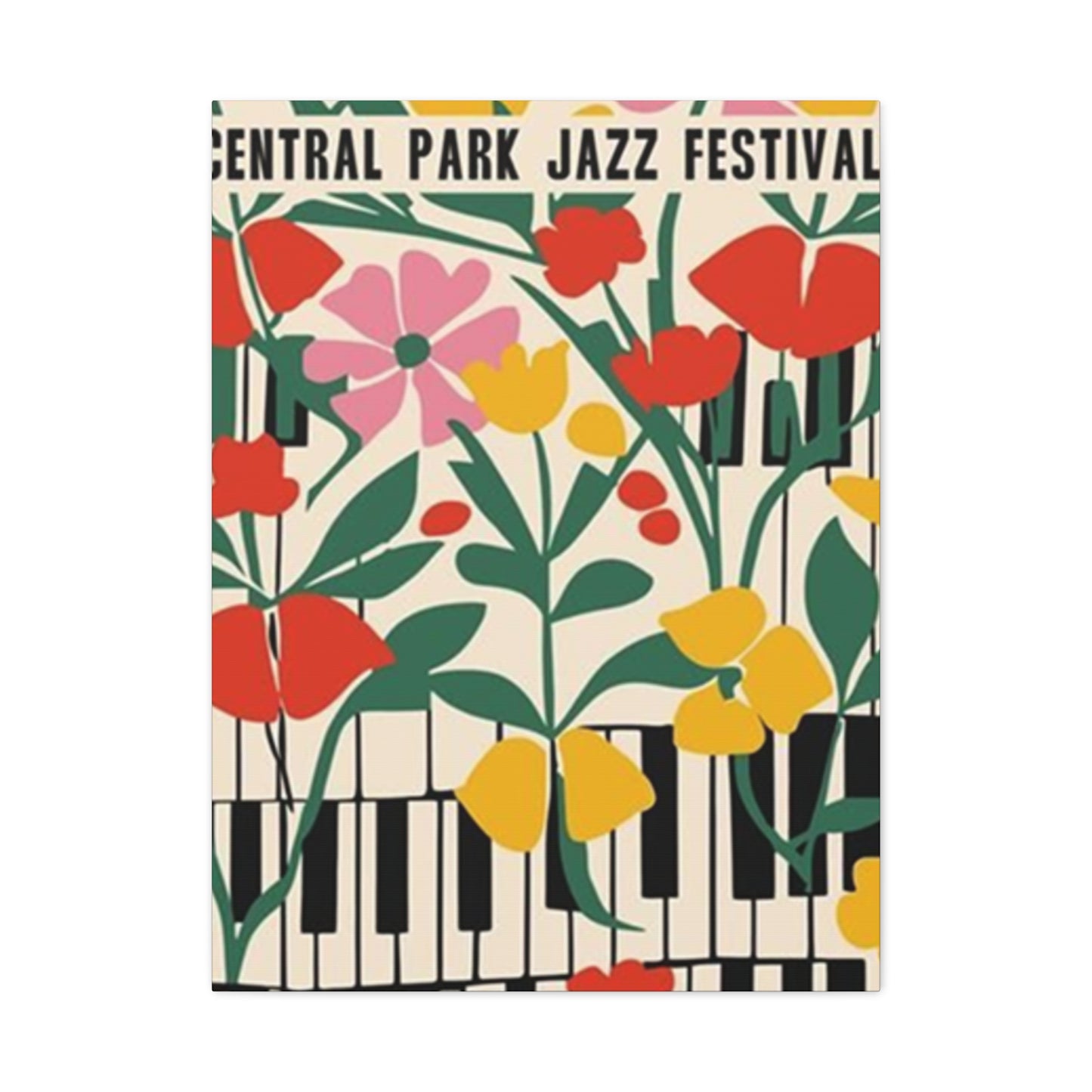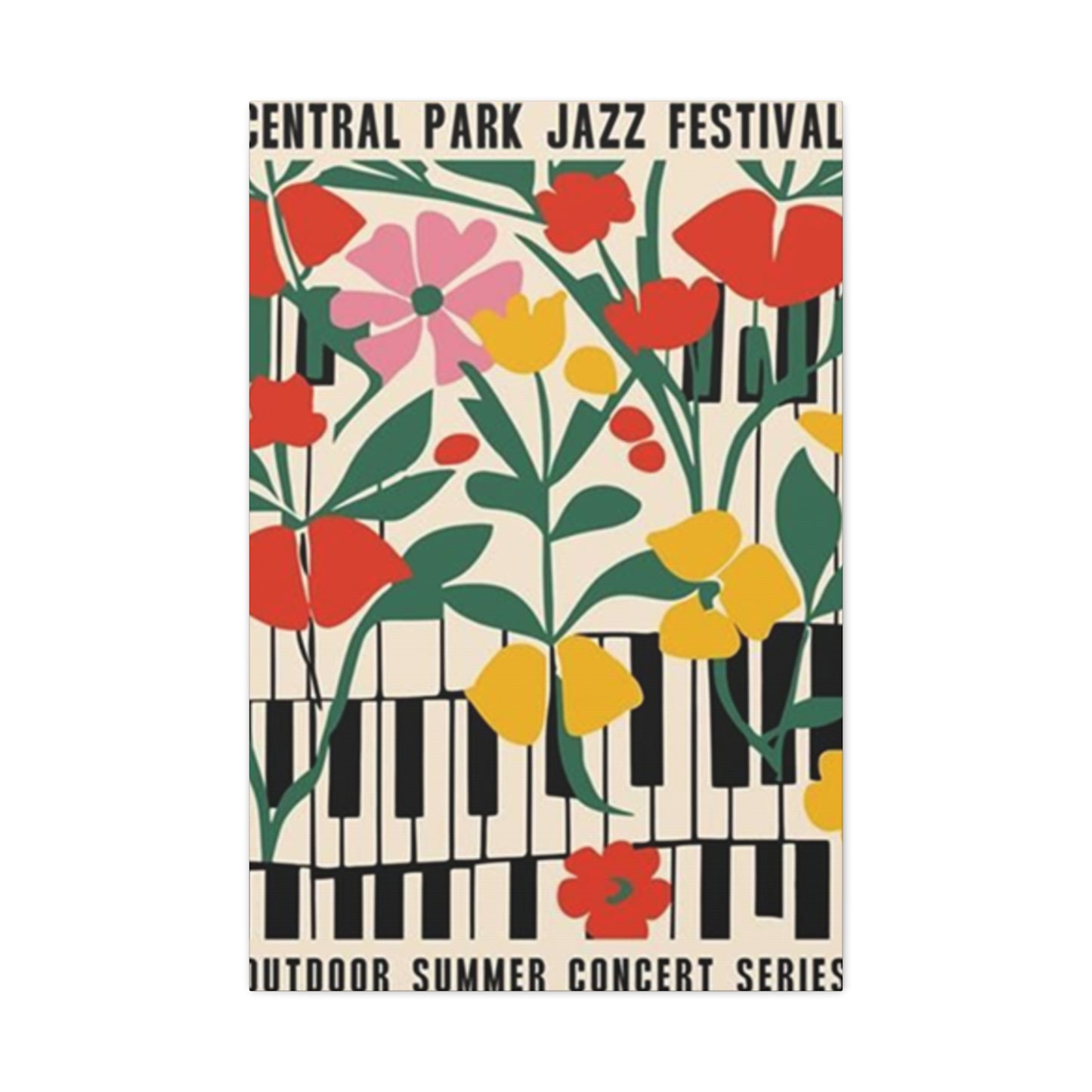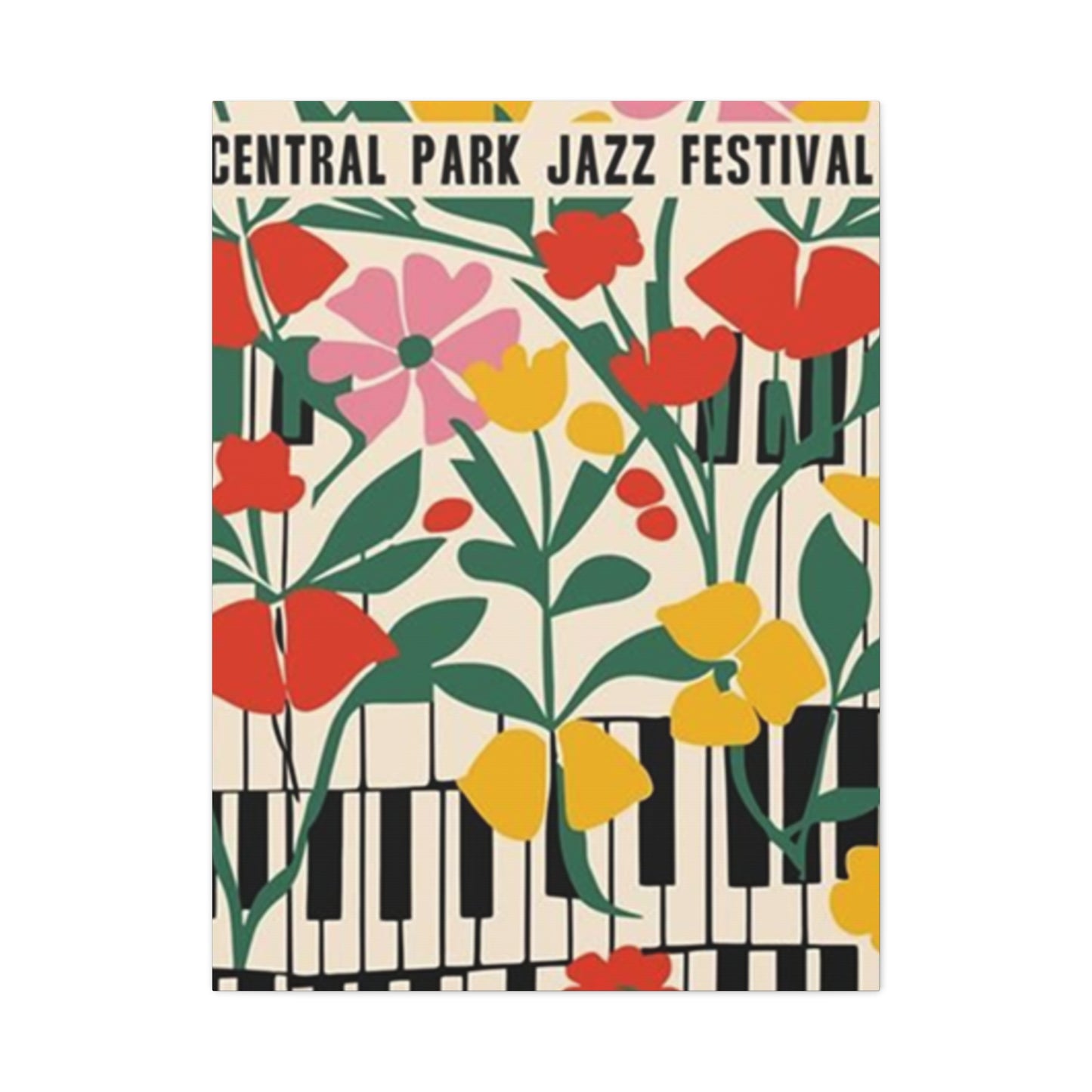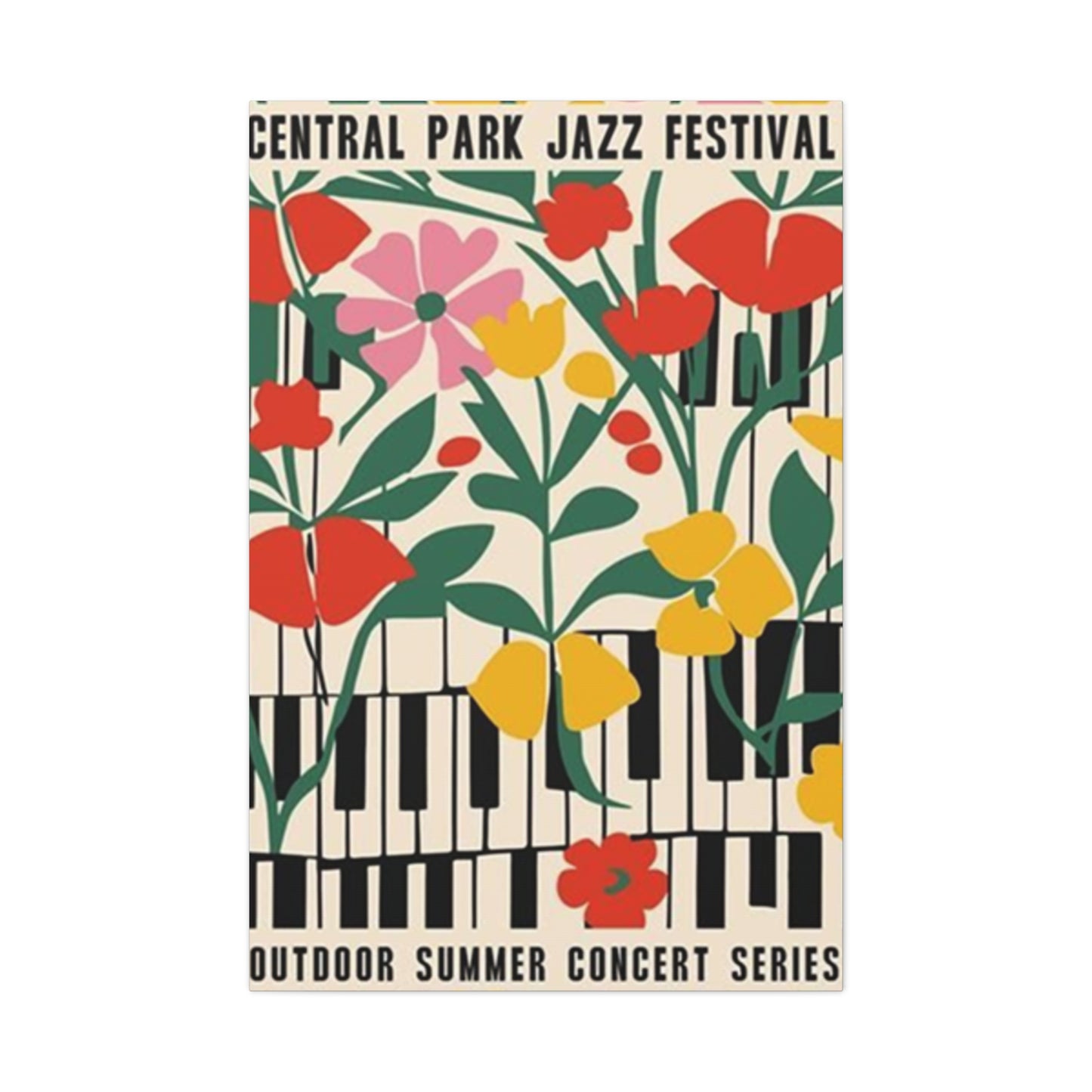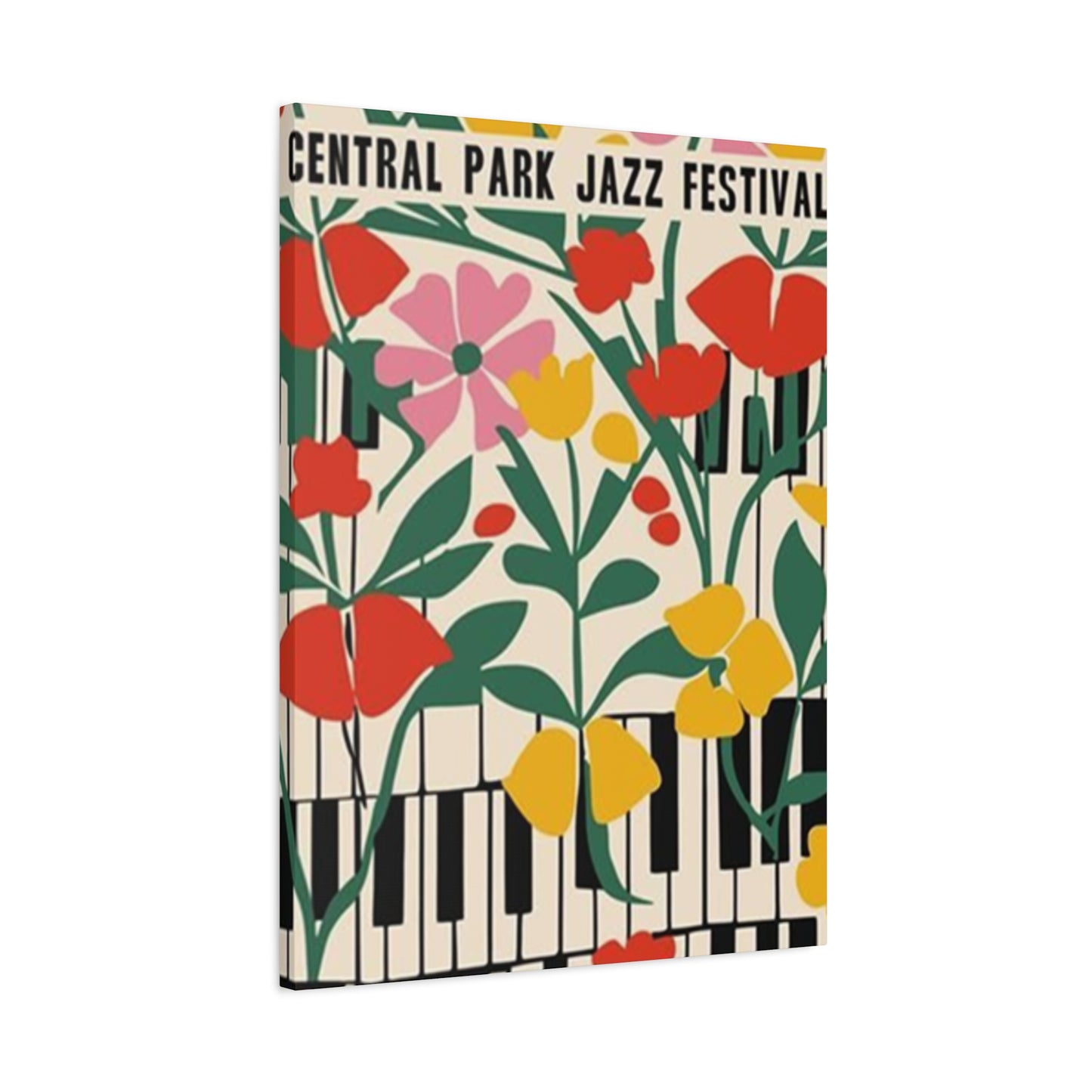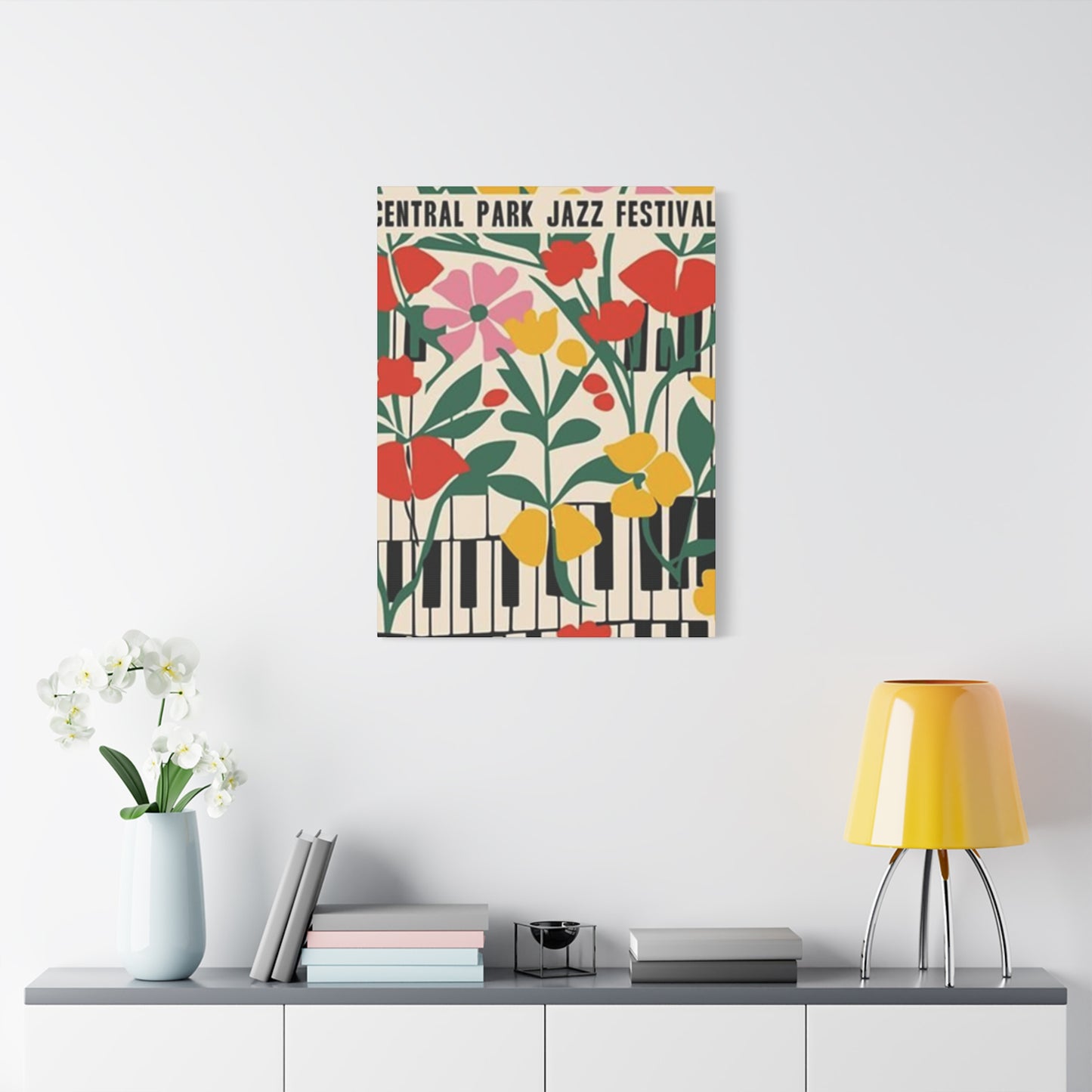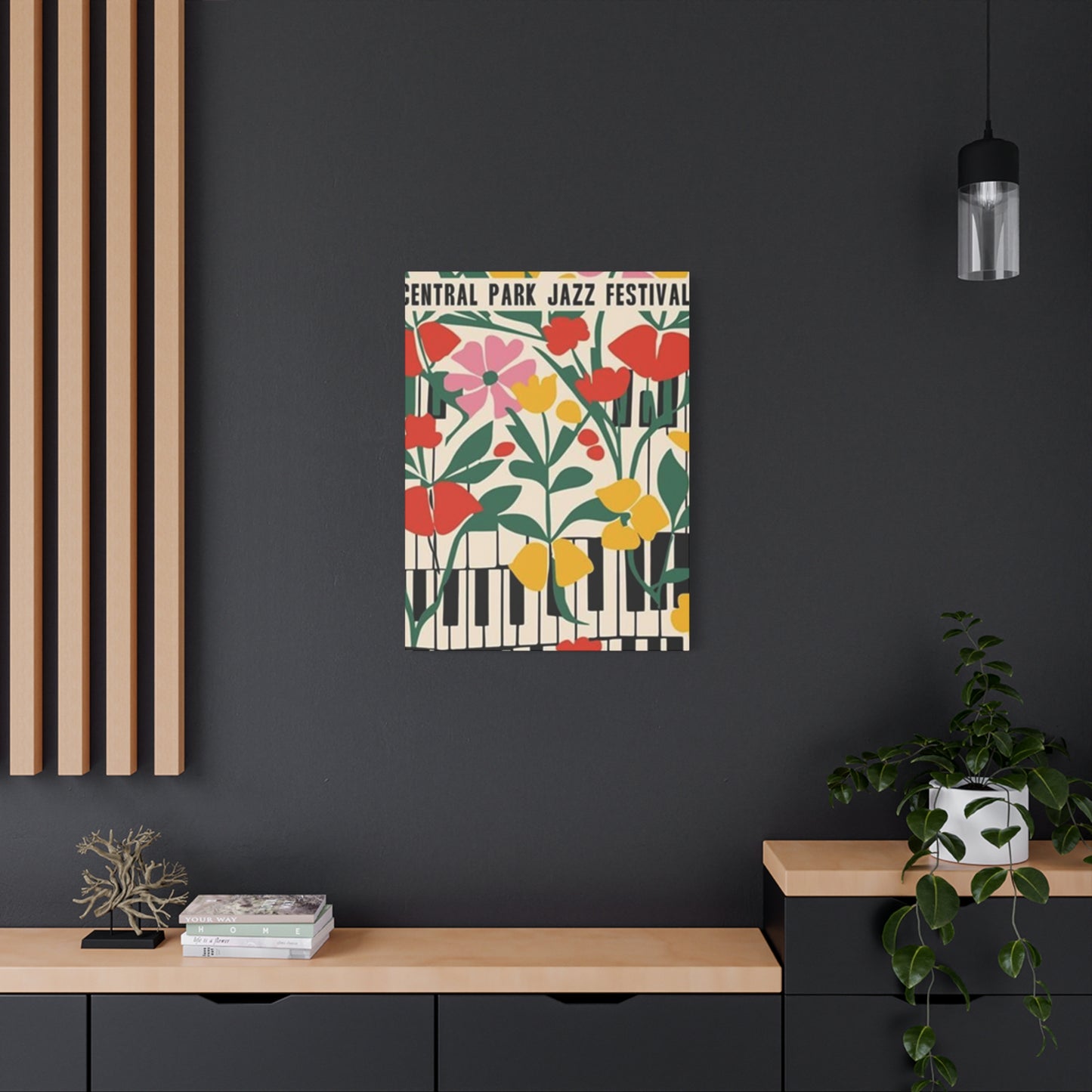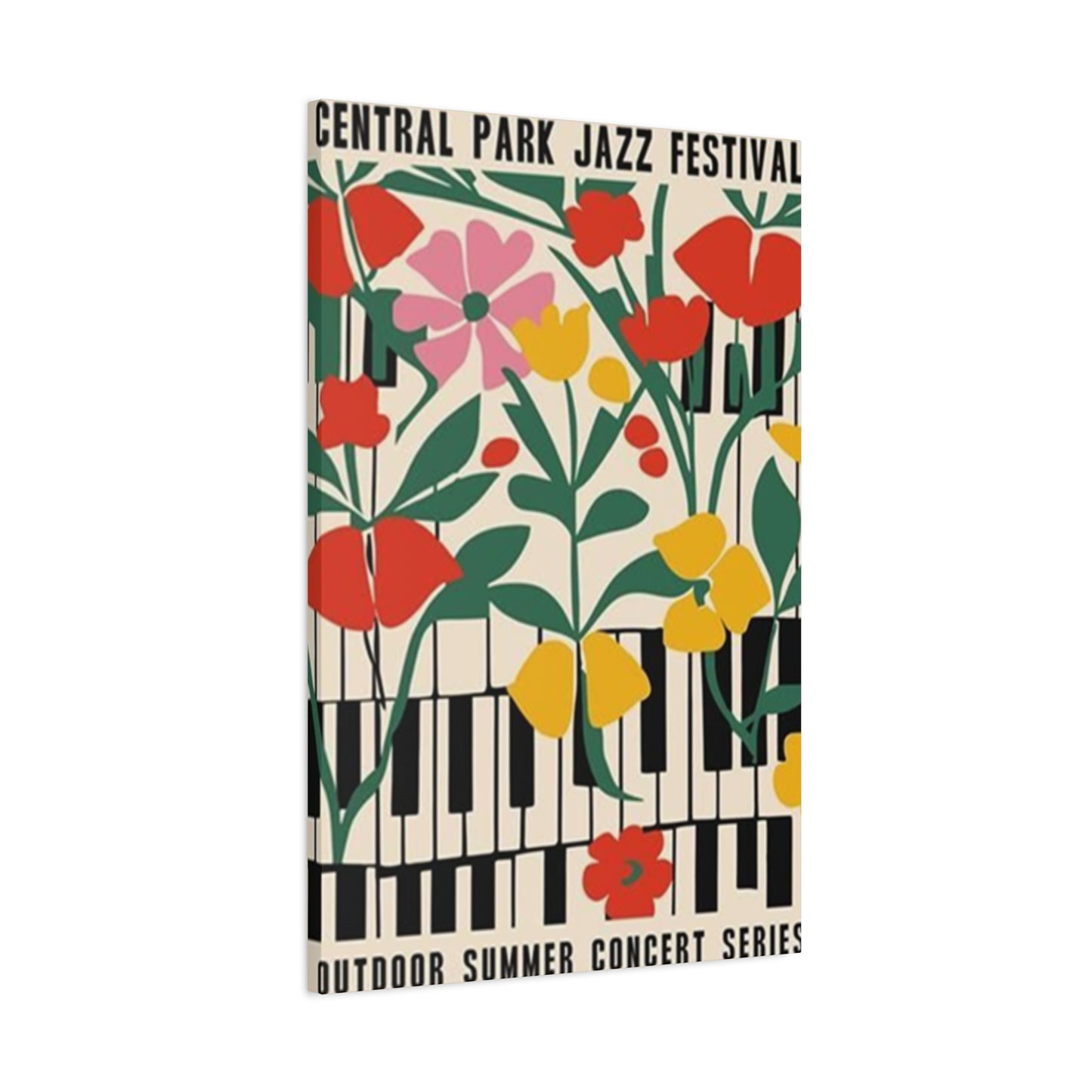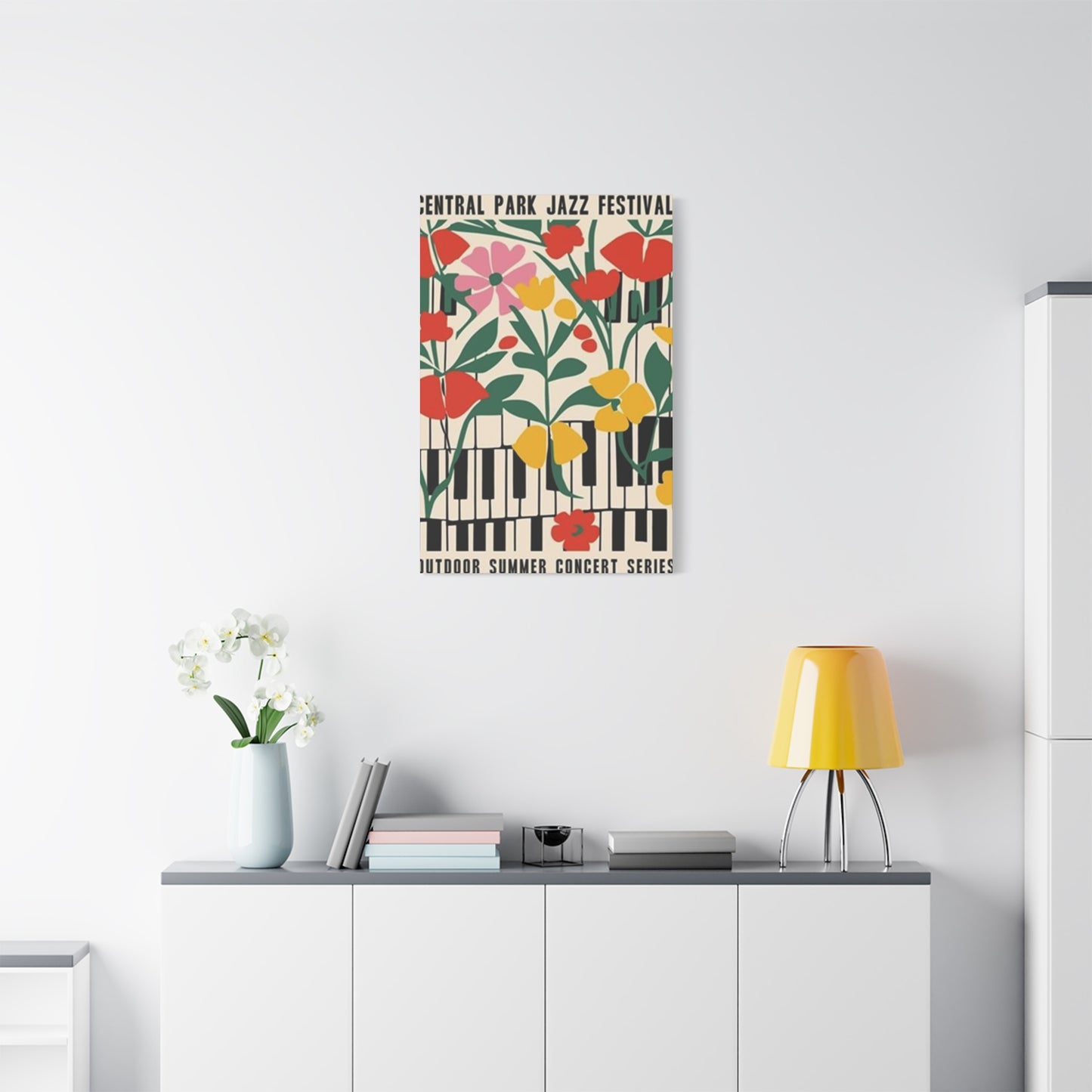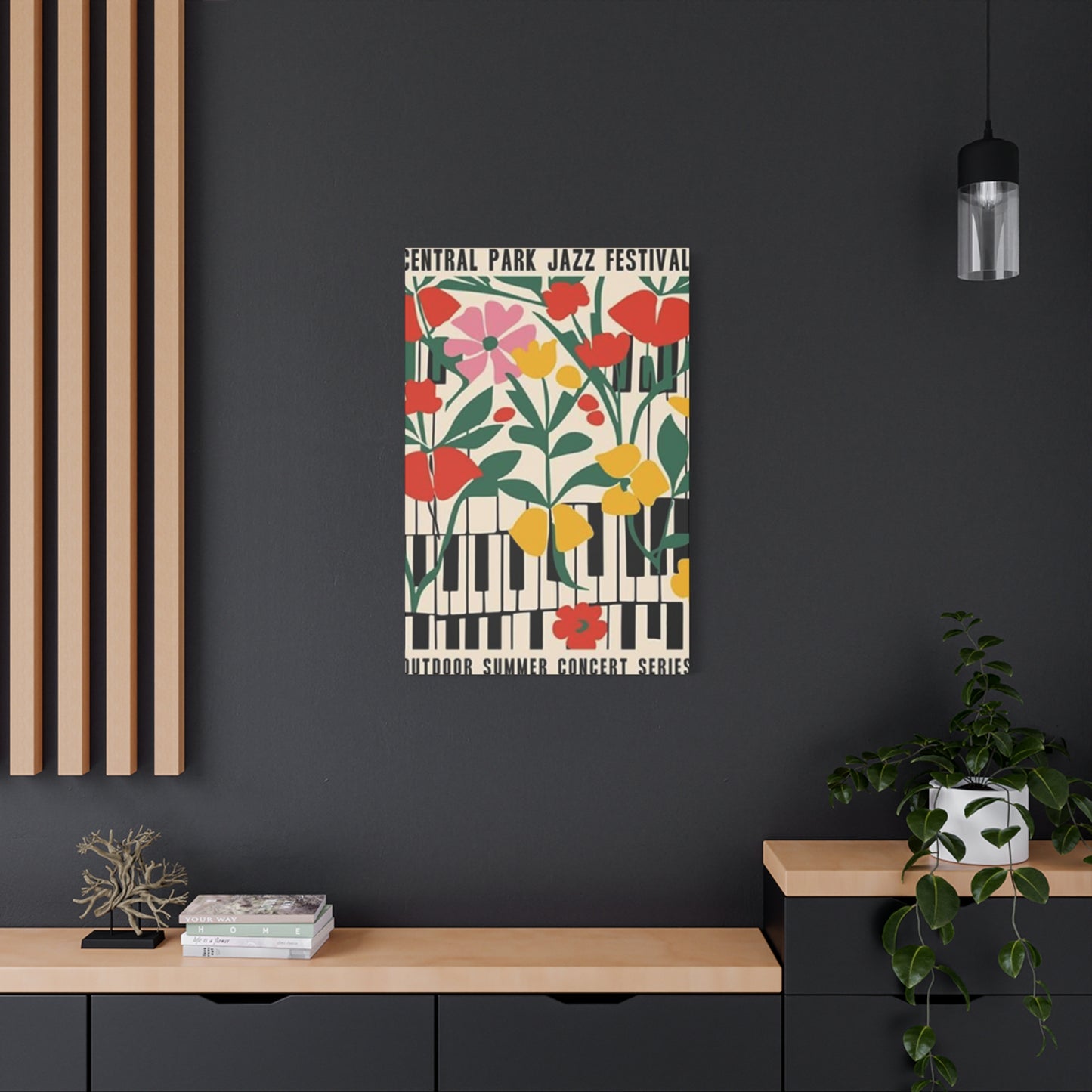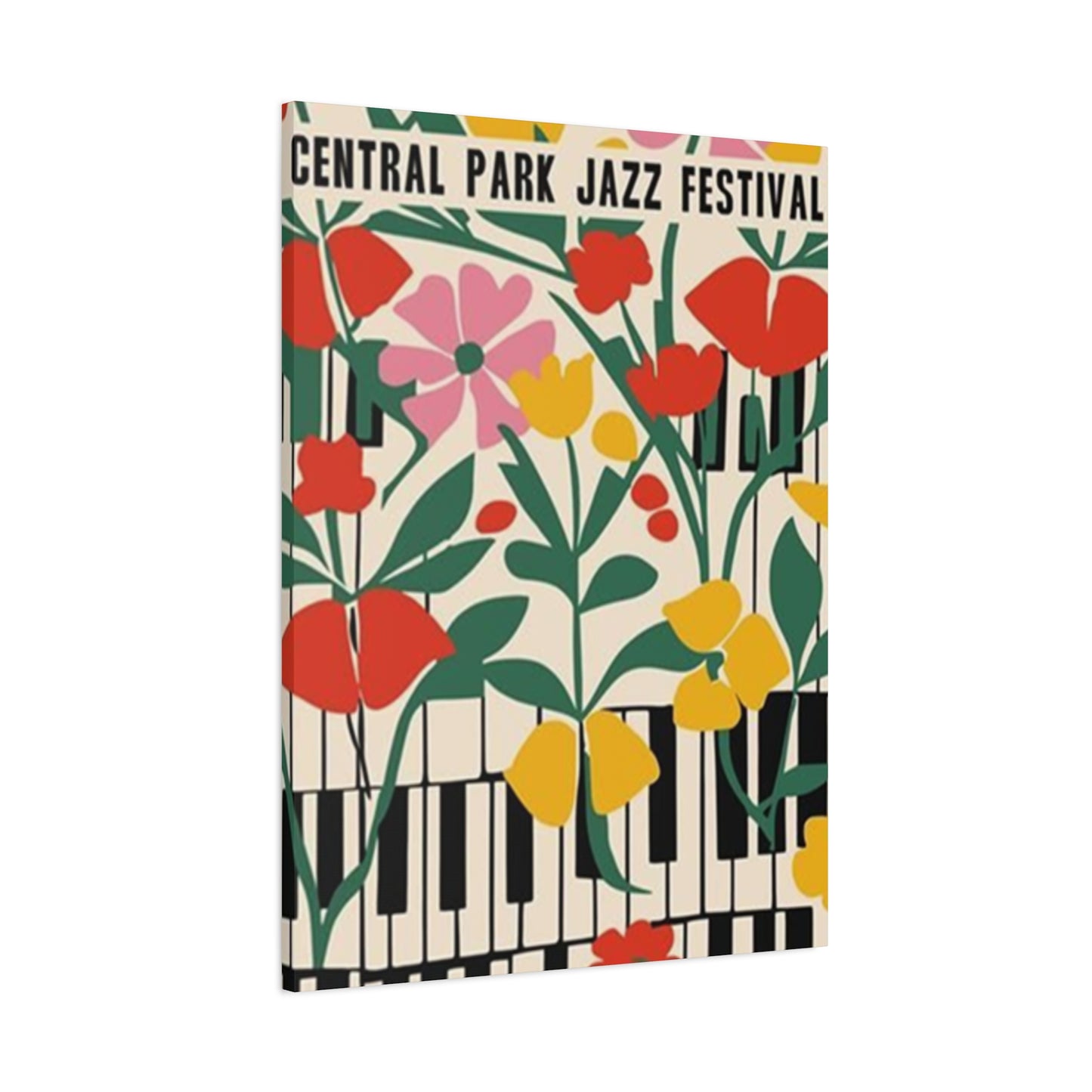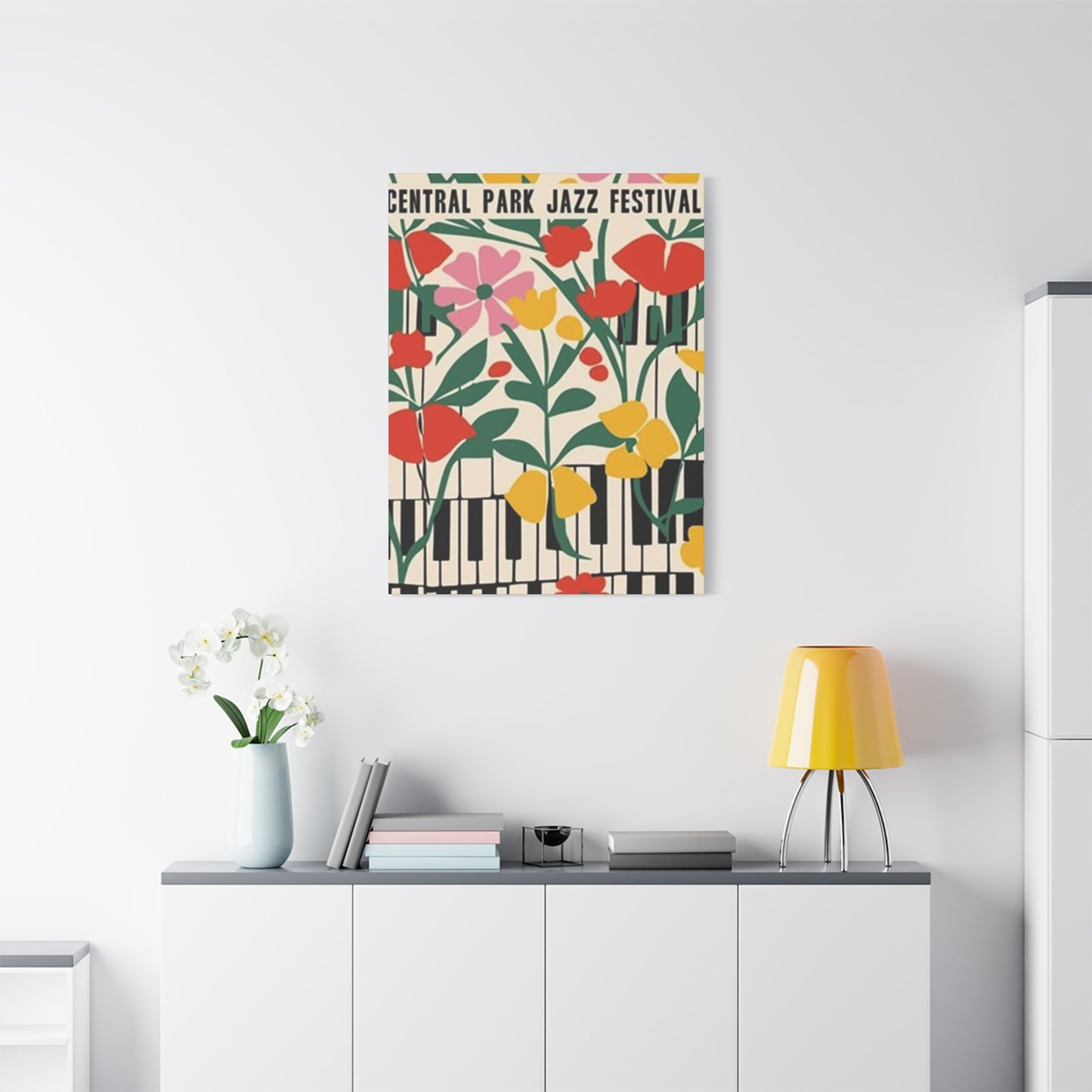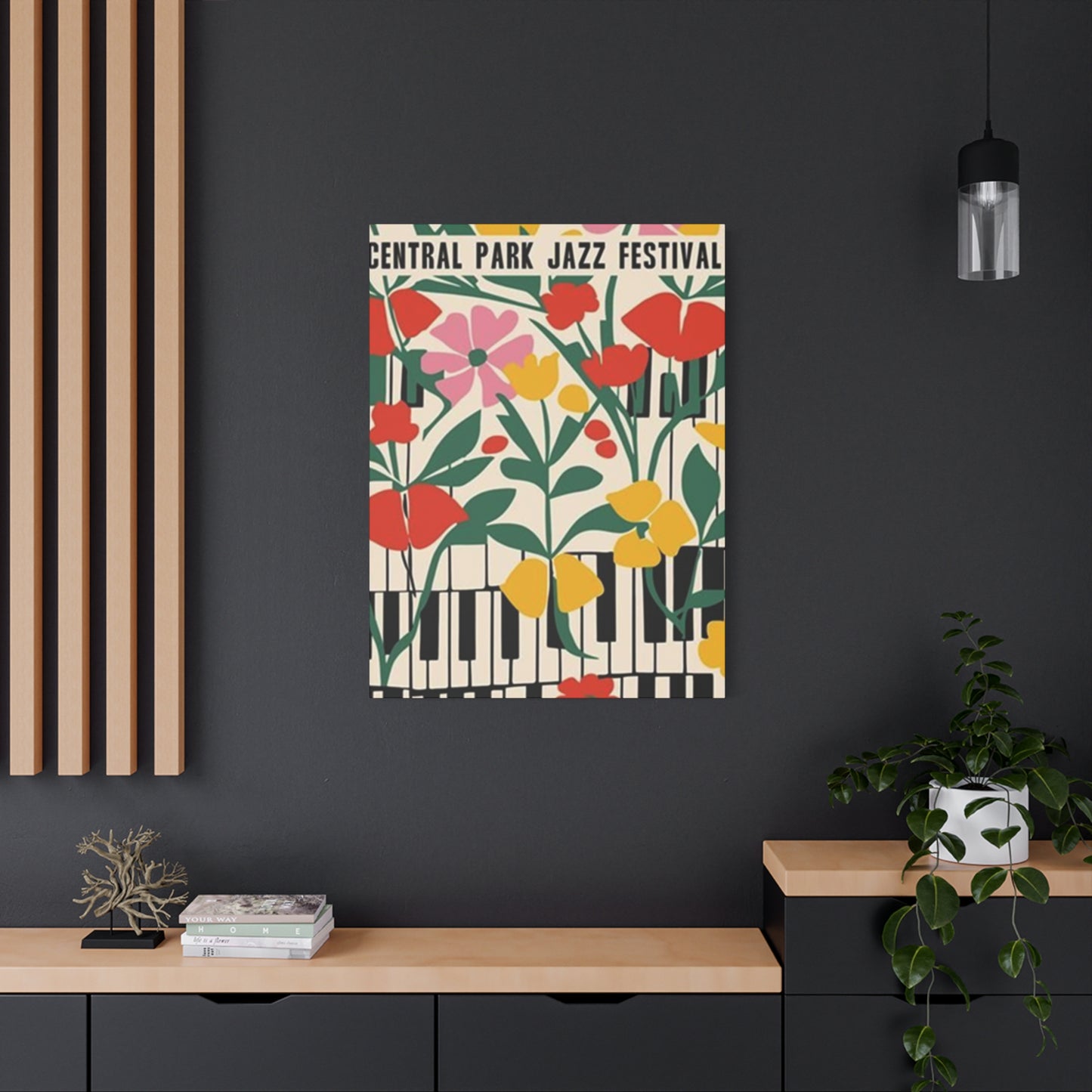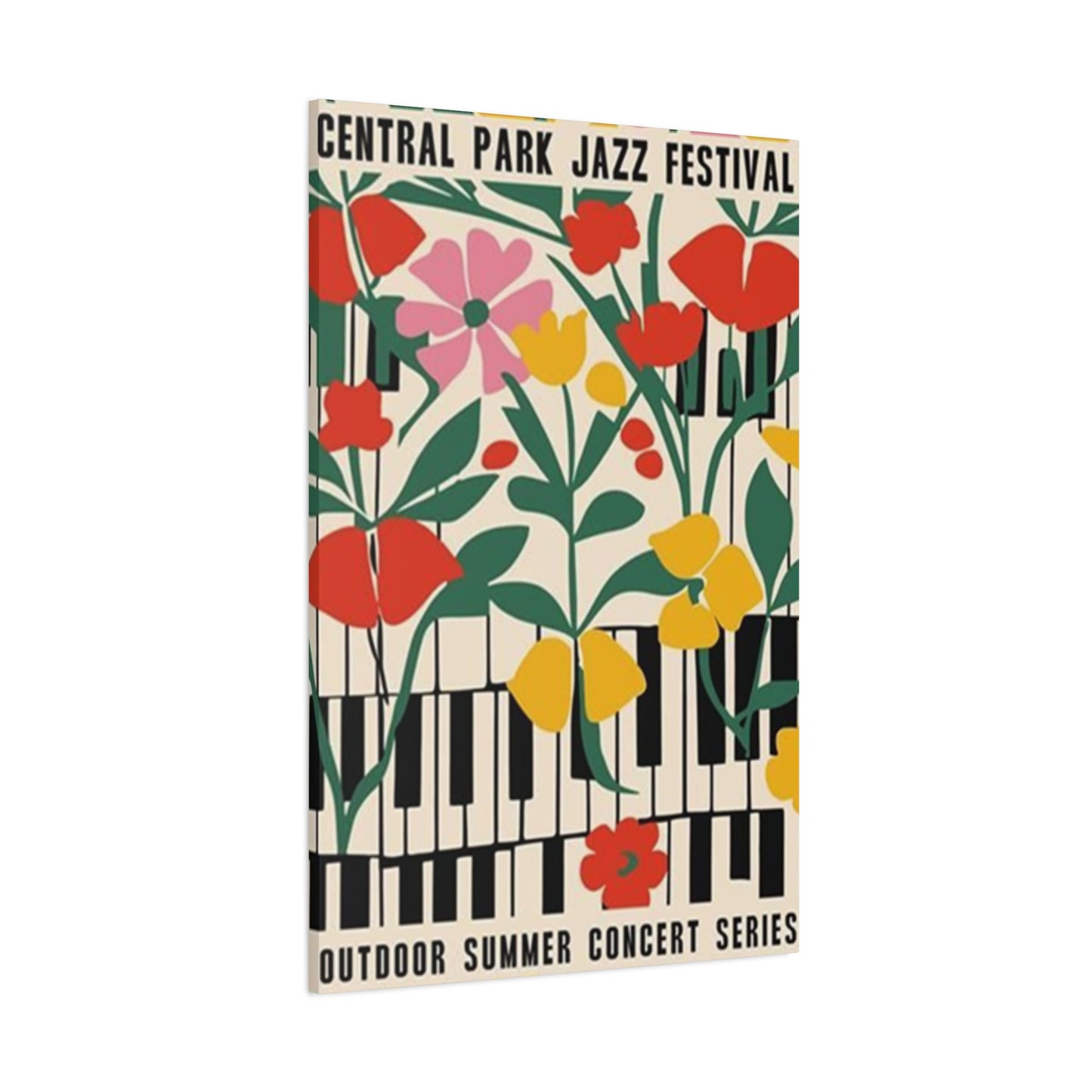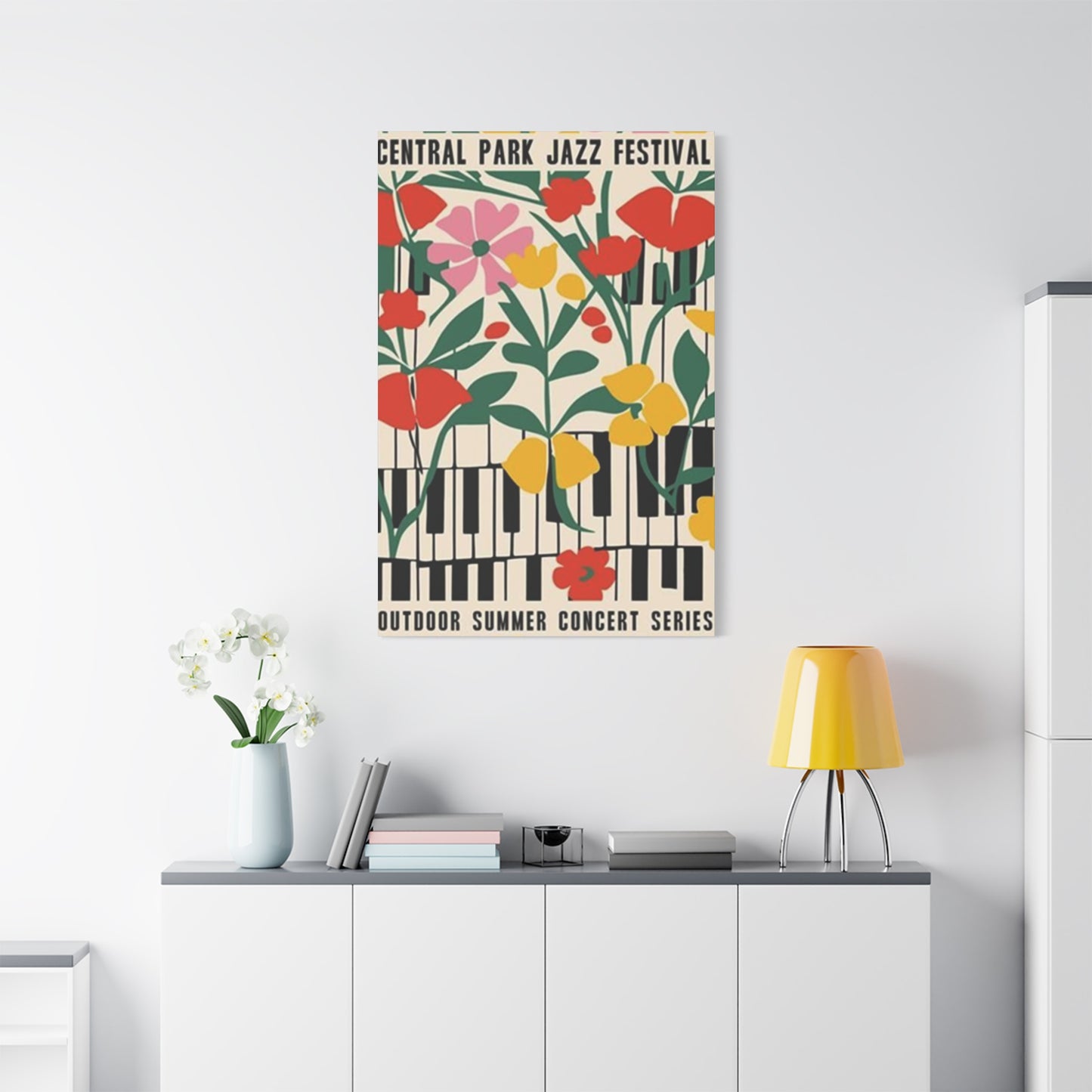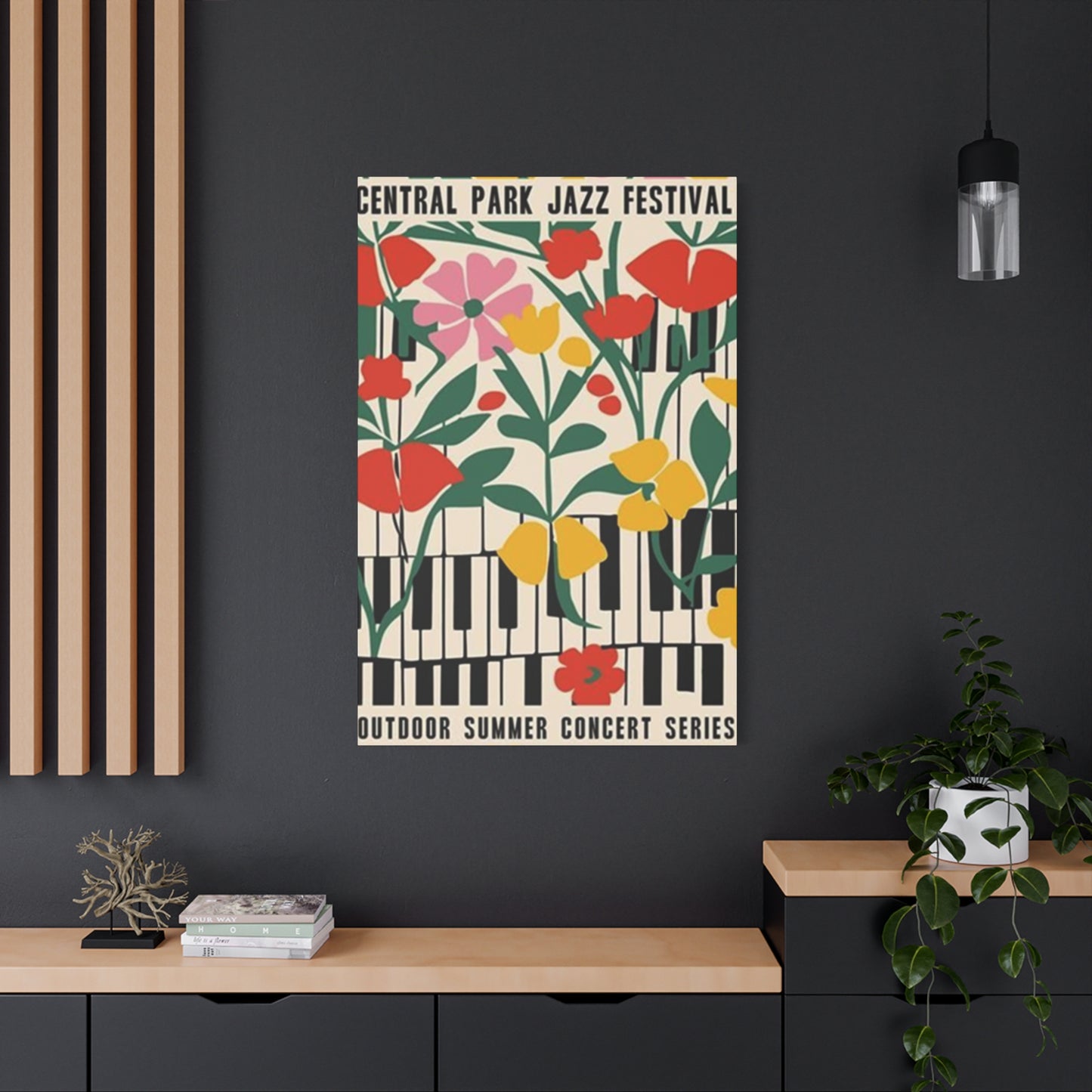Embracing the Musical Spirit Through Central Park Jazz Festival Wall Art
Central Park Jazz Festival wall art represents more than mere decoration; it embodies the vibrant cultural heritage that has made New York City a global epicenter of musical innovation. These artistic pieces capture the essence of spontaneous performances, legendary musicians, and unforgettable moments that have unfolded beneath the towering trees of Manhattan's most beloved green space.
The significance of Central Park as a jazz venue cannot be overstated. Since the festival's inception, this iconic location has witnessed countless breathtaking performances that have shaped the trajectory of American music. Jazz festival wall art serves as a visual chronicle of these precious moments, preserving the energy and passion that characterizes live jazz performances in an urban oasis.
Artists and designers who create Central Park Jazz Festival wall art understand the delicate balance between capturing the spontaneity of jazz music and translating it into static visual elements. They employ various techniques, including abstract representations of musical notes, stylized depictions of instruments, and atmospheric renderings of concert settings that evoke the magic of outdoor performances.
The appeal of Central Park Jazz Festival wall art extends beyond music enthusiasts to anyone who appreciates the intersection of culture, history, and artistic expression. These pieces often incorporate elements that are distinctly New York, such as skyline silhouettes, park landscapes, and urban architectural features that provide context for the musical celebrations they represent.
Collectors and art enthusiasts find Central Park Jazz Festival wall art particularly compelling because it represents a specific moment in cultural history while maintaining timeless aesthetic appeal. The pieces often feature rich color palettes that reflect the warm, inviting atmosphere of summer evening concerts, combined with design elements that suggest movement and rhythm inherent in jazz music.
The craftsmanship involved in creating authentic Central Park Jazz Festival wall art requires deep understanding of both musical culture and visual design principles. Artists must consider how to represent the improvisational nature of jazz through static imagery, often employing techniques such as asymmetrical compositions, flowing lines, and dynamic color transitions that mirror the unpredictable beauty of live jazz performances.
Contemporary interpretations of Central Park Jazz Festival wall art often blend traditional poster design elements with modern artistic sensibilities, creating pieces that honor the historical significance of the events while appealing to current aesthetic preferences. This evolution reflects the ongoing vitality of jazz music and its continued relevance in contemporary culture.
The emotional resonance of Central Park Jazz Festival wall art stems from its ability to transport viewers to those magical summer evenings when music filled the air and brought together diverse communities in celebration of artistic expression. These visual representations serve as windows into experiences that many people treasure as defining moments in their relationship with music and the city itself.
Historical Origins of Central Park Jazz Festival Artistic Documentation
The tradition of documenting Central Park Jazz Festival through visual art began in the early decades of the festival's existence, when poster artists and graphic designers recognized the need to create memorable promotional materials that would capture the unique atmosphere of these outdoor musical celebrations. These early artistic endeavors laid the foundation for what would eventually become a rich tradition of festival-related wall art.
During the formative years of the Central Park Jazz Festival, poster design reflected the broader artistic movements of the time, incorporating elements from Art Deco, modernist design principles, and the emerging visual language of American popular culture. Artists working on festival promotions understood that their creations needed to convey not just information about upcoming events, but also the emotional and cultural significance of jazz music in urban American life.
The evolution of Central Park Jazz Festival poster art mirrors the development of graphic design as a professional discipline. Early festival posters often featured hand-lettered typography, photographic collages, and illustration techniques that required considerable manual skill and artistic training. These original pieces now serve as valuable historical documents that provide insight into both the festival's development and the broader evolution of American graphic design.
As the festival gained prominence and attracted increasingly renowned performers, the quality and sophistication of associated artwork also evolved. Festival organizers began commissioning established artists and designers to create promotional materials, recognizing that high-quality visual representation could enhance the festival's prestige and attract more discerning audiences who valued both musical and visual artistry.
The documentation of Central Park Jazz Festival through poster art also reflected changing attitudes toward the preservation of cultural events. Festival organizers and artists began to understand that their visual creations were not merely temporary promotional tools but potential historical artifacts that could preserve the memory of specific performances and cultural moments for future generations.
Photographic documentation of Central Park Jazz Festival performances provided another source of inspiration for poster artists and wall art creators. These images captured the spontaneous interactions between performers and audiences, the interplay of natural lighting with stage illumination, and the unique atmosphere created when sophisticated music meets outdoor natural settings.
The influence of jazz album cover design on Central Park Jazz Festival poster art cannot be overlooked. Many artists drew inspiration from the iconic visual language developed by record labels and album designers, adapting these aesthetic approaches to capture the specific character of outdoor festival performances in Central Park's distinctive setting.
Regional and national media coverage of Central Park Jazz Festival events also contributed to the development of festival-related wall art traditions. Newspaper illustrations, magazine features, and television coverage created visual narratives around the festival that influenced how artists approached the challenge of representing these events through static imagery.
The commercial success of early Central Park Jazz Festival posters demonstrated that there was significant public interest in owning visual representations of these cultural events. This market demand encouraged artists to create more ambitious and sophisticated designs, leading to the development of limited edition prints and collectible poster series that appealed to both music fans and art collectors.
Memorable Jazz Performances Immortalized Through Wall Art
Central Park Jazz Festival wall art serves as a visual archive of legendary performances that have left indelible marks on the landscape of American music. These artistic representations capture moments when renowned jazz musicians transformed the park's natural amphitheater into a stage for musical history, creating memories that continue to resonate with audiences decades after the final notes faded into the summer evening air.
Artists who specialize in Central Park Jazz Festival wall art often focus on specific performances that have achieved legendary status among jazz enthusiasts. These might include breakthrough performances by emerging artists, farewell concerts by jazz legends, or collaborative performances that brought together musicians from different generations and stylistic traditions in unexpected and memorable ways.
The challenge of representing live musical performances through static visual art requires artists to employ various creative strategies. Some choose to focus on the physical gestures and expressions of performers, capturing the intense concentration and emotional engagement that characterizes jazz performance at its highest levels. Others emphasize the interaction between musicians and their environment, showing how the natural setting of Central Park influences and enhances the musical experience.
Color plays a crucial role in Central Park Jazz Festival wall art that commemorates specific performances. Artists often use warm, rich palettes that evoke the golden hour lighting common during evening concerts, or cooler tones that suggest the intimate atmosphere of late-night jazz sessions. These color choices help viewers connect emotionally with the represented performances, even if they were not present for the original events.
The incorporation of musical notation and instrument imagery in Central Park Jazz Festival wall art provides another layer of connection to specific performances. Artists might include stylized representations of saxophone lines, piano chord progressions, or drum patterns that were characteristic of particular performances, allowing musically knowledgeable viewers to recognize and appreciate these references.
Many Central Park Jazz Festival wall art pieces celebrating iconic performances also incorporate elements that speak to the broader cultural significance of these events. This might include representations of diverse audience members, references to the historical context surrounding particular performances, or visual metaphors that connect the music to larger themes of cultural expression and social unity.
The documentation of legendary Central Park Jazz Festival performances through wall art also serves an educational function, introducing new generations to musical history and encouraging appreciation for the artistic achievements of past performers. These visual representations can spark curiosity about the music itself, leading viewers to explore recordings and learn more about the artists and styles represented.
Contemporary artists creating Central Park Jazz Festival wall art often draw inspiration from historical performances while applying modern artistic techniques and sensibilities. This approach allows them to honor the legacy of past musical achievements while creating artwork that speaks to current aesthetic preferences and cultural perspectives.
The market for Central Park Jazz Festival wall art commemorating specific performances reflects the enduring appeal of these musical events. Collectors particularly value pieces that represent performances they attended personally, as these artworks help preserve and celebrate their own musical memories and experiences.
Limited edition Central Park Jazz Festival wall art featuring legendary performances often becomes increasingly valuable over time, as the historical significance of the represented events becomes more apparent and the number of people who witnessed these performances firsthand continues to diminish.
Discovering Authentic Central Park Jazz Festival Artistic Prints
Finding genuine Central Park Jazz Festival wall art requires knowledge of legitimate sources, authentication methods, and the ability to distinguish between original promotional materials and later reproductions. The market for festival-related artwork includes everything from original vintage posters created for specific festival years to contemporary interpretations by independent artists inspired by the festival's legacy.
Authentic vintage Central Park Jazz Festival posters can often be found through specialized poster dealers, auction houses that focus on entertainment memorabilia, and estate sales from collectors who attended festivals during their early years. These original pieces typically feature specific printing techniques, paper qualities, and design elements that reflect the era in which they were created, making them valuable both as historical documents and collectible artworks.
Music memorabilia shows and conventions provide excellent opportunities to discover authentic Central Park Jazz Festival wall art while also allowing potential buyers to examine pieces in person and verify their authenticity. Experienced dealers at these events can provide valuable information about the provenance and history of specific pieces, helping collectors make informed purchasing decisions.
Online marketplaces have expanded access to Central Park Jazz Festival wall art, but they also require careful evaluation to ensure authenticity. Reputable sellers typically provide detailed photographs showing printing characteristics, paper aging, and any flaws or damage that might affect value. They also offer documentation about the piece's history and provenance when available.
Contemporary artists who create Central Park Jazz Festival wall art often sell their work through galleries that specialize in music-related art, online platforms that support independent artists, or directly through their own studios and websites. These pieces offer the advantage of being available in excellent condition while providing modern interpretations of classic festival themes.
The authentication of vintage Central Park Jazz Festival posters often requires expertise in printing techniques used during specific time periods. Original posters typically feature particular types of paper, ink qualities, and printing methods that can be distinguished from later reproductions through careful examination. Collectors serious about authenticity often consult with experts or use professional authentication services.
Prices for authentic Central Park Jazz Festival wall art vary widely based on factors including rarity, condition, historical significance, and artistic quality. Original posters from the festival's early years or from particularly memorable events typically command higher prices than more recent pieces or contemporary interpretations of festival themes.
Building relationships with reputable dealers and other collectors can provide access to Central Park Jazz Festival wall art that might not be available through public marketplaces. These connections often lead to opportunities to acquire pieces with interesting histories or exceptional quality that enhance both the aesthetic and investment value of a collection.
Documentation plays a crucial role in establishing the authenticity and value of Central Park Jazz Festival wall art. Original purchase receipts, gallery certificates, and historical documentation about specific festival years can significantly enhance a piece's provenance and potential resale value.
The condition of Central Park Jazz Festival wall art significantly affects its value and display potential. Original posters that have been properly stored and remain free from damage such as tears, fading, or water stains are considerably more valuable than pieces that show significant wear or deterioration.
Enriching Your Living Space with Jazz Festival Artwork
Incorporating Central Park Jazz Festival wall art into residential spaces creates an atmosphere that celebrates musical culture while adding sophisticated visual interest to interior design schemes. These pieces work particularly well in spaces where people gather to appreciate music, engage in creative activities, or simply relax and enjoy the cultural richness that jazz music represents.
The selection of appropriate Central Park Jazz Festival wall art for residential spaces requires consideration of both aesthetic factors and the functional requirements of different rooms. Pieces with vibrant colors and energetic compositions work well in social spaces like living rooms and dining areas, while more subdued or contemplative pieces might be better suited for bedrooms or private study areas.
Scale plays an important role in successfully incorporating Central Park Jazz Festival wall art into residential interiors. Large statement pieces can serve as focal points in spacious rooms, while smaller prints might be grouped together to create gallery-style displays that build visual impact through repetition and variation rather than individual size.
The framing and presentation of Central Park Jazz Festival wall art significantly affects how these pieces integrate with existing interior design elements. Professional framing with appropriate matting and glass protection not only preserves the artwork but also allows it to coordinate with other decorative elements and architectural features within the space.
Lighting considerations are particularly important when displaying Central Park Jazz Festival wall art, as improper illumination can cause fading or damage while also failing to showcase the pieces to their best advantage. Natural light should be filtered to prevent UV damage, while artificial lighting should be positioned to minimize glare and enhance the colors and details of the artwork.
The arrangement of multiple Central Park Jazz Festival wall art pieces requires careful planning to create cohesive visual narratives that enhance rather than overwhelm the spaces they occupy. Groupings might be organized chronologically to tell the story of the festival's evolution, thematically to explore different aspects of jazz culture, or purely aesthetically to create pleasing visual compositions.
Color coordination between Central Park Jazz Festival wall art and existing interior design elements can create harmonious spaces that feel intentionally designed rather than randomly decorated. This might involve selecting pieces that complement existing color schemes or using the artwork as inspiration for broader decorative choices throughout the space.
The cultural significance of Central Park Jazz Festival wall art makes these pieces excellent conversation starters that can enrich social interactions within residential spaces. Guests often appreciate learning about the history and significance of displayed artwork, creating opportunities for discussions about music, culture, and personal experiences with jazz festivals.
Maintenance of Central Park Jazz Festival wall art in residential settings requires attention to environmental factors such as humidity, temperature fluctuations, and air quality that can affect the longevity and appearance of the pieces. Proper care ensures that these artworks continue to enhance living spaces for many years while maintaining their visual impact and potential value.
The emotional impact of Central Park Jazz Festival wall art in residential spaces often extends beyond mere decoration to create environments that inspire creativity, relaxation, and appreciation for cultural expression. Many homeowners find that these pieces contribute to a sense of connection with the broader cultural community and the rich artistic traditions they represent.
Designing Music Rooms with Central Park Jazz Festival Artwork
Music rooms and listening spaces provide ideal settings for Central Park Jazz Festival wall art, as these environments are specifically designed to celebrate and enhance musical experiences. The visual presence of festival artwork in music rooms creates atmospheric connections between recorded music and the live performance traditions that these pieces represent.
The acoustic properties of music rooms must be considered when selecting and installing Central Park Jazz Festival wall art, as the placement of framed pieces can affect sound reflection and absorption within the space. Professional installation that takes these factors into account ensures that the artwork enhances rather than detracts from the room's primary function as a musical environment.
Central Park Jazz Festival wall art in music rooms can serve as visual inspiration for musicians who use these spaces for practice, composition, or performance. The imagery of legendary jazz performances and festival atmospheres can help create mental connections to musical traditions and encourage creative expression that draws from the rich history of American jazz.
The integration of Central Park Jazz Festival wall art with music equipment and instruments requires careful planning to create harmonious visual compositions. Artwork should complement rather than compete with instruments for visual attention, while also providing aesthetic context that enhances the overall design of the music room.
Lighting design in music rooms featuring Central Park Jazz Festival wall art must balance the need to properly illuminate the artwork with the functional lighting requirements for musical activities. Adjustable lighting systems allow for different configurations depending on whether the space is being used for active music-making or passive listening and appreciation.
The selection of Central Park Jazz Festival wall art for music rooms might emphasize pieces that reflect the specific musical interests or performance history of the room's users. Musicians who have performed at jazz festivals might choose artwork that connects to their own experiences, while collectors might focus on pieces representing their favorite performers or festival years.
Storage and organization systems in music rooms can incorporate display elements that show smaller Central Park Jazz Festival wall art pieces alongside music-related books, recordings, and sheet music. These integrated display systems create comprehensive visual narratives that celebrate multiple aspects of musical culture and personal musical history.
The maintenance of Central Park Jazz Festival wall art in music rooms requires consideration of factors such as humidity from wind instruments, temperature variations from electronic equipment, and potential vibrations from audio systems. Proper environmental controls and mounting systems ensure that artwork remains in excellent condition despite the active nature of these spaces.
Educational displays incorporating Central Park Jazz Festival wall art can enhance music rooms by providing historical context and cultural information that enriches the musical experiences that occur within these spaces. These displays might include timeline information, performer biographies, and connections between festival history and broader developments in jazz music.
The psychological impact of Central Park Jazz Festival wall art in music rooms contributes to creating environments that inspire serious musical engagement while also celebrating the joy and community aspects of musical culture. Many musicians find that these visual reminders of live performance traditions help maintain connection to the broader musical community and artistic heritage.
Color Psychology and Visual Rhythm in Jazz Festival Artwork
The design principles underlying effective Central Park Jazz Festival wall art draw heavily from the psychological effects of color and the visual representation of musical rhythm. Artists working in this medium must translate auditory experiences into visual languages that evoke similar emotional responses and cultural associations in viewers who encounter their work.
Color choices in Central Park Jazz Festival wall art often reflect the warm, inviting atmosphere of summer evening concerts, with palettes that emphasize golden yellows, rich oranges, and deep blues that suggest twilight performances under open skies. These colors create emotional associations with relaxation, community gathering, and the special atmosphere that characterizes outdoor musical events.
The representation of musical rhythm through visual design elements requires sophisticated understanding of how static images can suggest movement and temporal progression. Central Park Jazz Festival wall art often employs flowing lines, repeated patterns, and dynamic compositions that mirror the improvisational and rhythmically complex nature of jazz music itself.
Contrast plays a crucial role in effective Central Park Jazz Festival wall art, both in terms of color relationships and compositional elements that create visual interest and guide viewer attention. High contrast elements can represent the dramatic dynamics of live jazz performance, while subtle gradations might suggest the nuanced interplay between different musical voices.
The use of abstract versus representational elements in Central Park Jazz Festival wall art reflects different approaches to translating musical experiences into visual form. Some artists prefer literal representations of performers, instruments, and festival settings, while others use purely abstract elements to suggest the emotional and spiritual dimensions of jazz music.
Typography and text elements in Central Park Jazz Festival wall art must harmonize with other visual components while also conveying necessary information about events, performers, or themes. The integration of text requires careful consideration of font choices, sizing, and placement that support rather than overwhelm the overall artistic composition.
Texture and surface quality contribute significantly to the visual impact of Central Park Jazz Festival wall art, with different printing techniques and paper choices creating tactile qualities that enhance the viewing experience. These material considerations can suggest the intimate, handcrafted quality that characterizes much jazz music and performance.
The psychological impact of symmetry versus asymmetry in Central Park Jazz Festival wall art reflects broader questions about how visual composition can mirror musical structure. Jazz music's emphasis on improvisation and spontaneity often translates into asymmetrical visual compositions that suggest creative freedom and artistic spontaneity.
Cultural symbolism embedded within Central Park Jazz Festival wall art must be carefully considered to ensure that visual elements accurately represent and respect the cultural traditions from which jazz music emerged. This includes consideration of how different colors, symbols, and imagery might be interpreted by viewers from diverse cultural backgrounds.
The evolution of color printing technology has expanded the possibilities for Central Park Jazz Festival wall art while also creating new challenges for artists who must understand how their color choices will reproduce across different printing methods and display conditions. Modern digital printing allows for color precision that was impossible in earlier eras of poster production.
Professional Framing Techniques for Jazz Festival Artwork
Proper framing of Central Park Jazz Festival wall art requires specialized knowledge of preservation techniques, aesthetic considerations, and display methods that protect these valuable pieces while enhancing their visual impact. Professional framing not only preserves artwork for future generations but also allows pieces to integrate successfully with diverse interior design schemes.
The selection of appropriate matting materials for Central Park Jazz Festival wall art must prioritize archival quality to prevent chemical reactions that could damage the artwork over time. Acid-free mats and backing materials create stable environments that protect paper-based artwork from deterioration while also providing visual separation between the artwork and frame elements.
Frame selection for Central Park Jazz Festival wall art should complement rather than overwhelm the artistic elements while providing adequate protection from environmental hazards. The width, color, and style of frame molding must be chosen to enhance the specific characteristics of individual pieces while also coordinating with the display environment.
Glass options for Central Park Jazz Festival wall art include standard glazing, UV-filtering glass, and museum-quality glazing that provides maximum protection from light damage while minimizing reflections that could interfere with viewing. The choice of glazing depends on factors including the value of the artwork, display location, and lighting conditions.
Professional installation of framed Central Park Jazz Festival wall art requires consideration of wall type, mounting hardware, and environmental factors that could affect the long-term stability of the display. Proper installation ensures that valuable artwork remains secure while also allowing for easy removal or repositioning when necessary.
Conservation framing techniques for valuable Central Park Jazz Festival wall art include methods such as hinge mounting that allow artwork to expand and contract naturally while preventing damage from adhesives or mounting pressure. These techniques are particularly important for original vintage posters that may be irreplaceable.
The spacing and arrangement of multiple framed Central Park Jazz Festival wall art pieces requires careful measurement and planning to create visually balanced displays that enhance rather than overwhelm the spaces they occupy. Professional installers use templates and spacing guides to ensure precise alignment and appropriate visual relationships between pieces.
Environmental considerations for displaying framed Central Park Jazz Festival wall art include protection from direct sunlight, humidity control, and temperature stability that prevent damage from environmental fluctuations. Proper environmental management extends the lifespan of artwork while maintaining its visual appeal.
Maintenance of framed Central Park Jazz Festival wall art involves regular inspection for signs of damage or deterioration, cleaning of glass and frame surfaces, and monitoring of environmental conditions that could affect the artwork. Professional maintenance helps preserve both the aesthetic and monetary value of displayed pieces.
The documentation of framing materials and techniques used for Central Park Jazz Festival wall art provides valuable information for insurance purposes and future conservation efforts. Detailed records help ensure that appropriate methods are used for any future reframing or conservation work that may become necessary.
Contrasting Vintage and Contemporary Jazz Festival Poster Styles
The evolution of Central Park Jazz Festival wall art reflects broader changes in graphic design, printing technology, and cultural attitudes toward visual communication. Comparing vintage and contemporary approaches to festival poster design reveals fascinating insights into how artistic expression adapts to changing technological possibilities and cultural contexts.
Vintage Central Park Jazz Festival posters typically employed hand-lettered typography, photographic collage techniques, and printing methods that created distinctive visual characteristics now considered hallmarks of mid-century design. These early pieces often featured bold, simplified compositions that communicated essential information while creating strong visual impact despite limited color printing capabilities.
Contemporary Central Park Jazz Festival wall art benefits from digital design tools and advanced printing technologies that allow for complex color gradations, precise typography control, and sophisticated image manipulation techniques. Modern artists can create effects and achieve visual precision that would have been impossible or prohibitively expensive during the early years of festival poster production.
The aesthetic sensibilities reflected in vintage Central Park Jazz Festival posters often emphasized bold geometric shapes, high contrast color relationships, and typographic treatments that reflected the design movements of their respective eras. These historical pieces now serve as windows into the visual culture and design philosophy of past decades.
Modern Central Park Jazz Festival wall art often incorporates digital photography, computer-generated imagery, and design elements that reflect contemporary aesthetic preferences while still honoring the musical and cultural traditions that these pieces represent. Contemporary artists must balance innovation with respect for established visual traditions.
The production methods used for vintage Central Park Jazz Festival posters often resulted in unique characteristics such as registration marks, color variations between different print runs, and paper qualities that are difficult or impossible to replicate using modern printing techniques. These production artifacts now contribute to the collectible value of original pieces.
Color palettes in vintage versus contemporary Central Park Jazz Festival wall art reflect different technological capabilities and aesthetic preferences. Vintage pieces often worked within limitations imposed by available printing inks and processes, while contemporary pieces can utilize virtually unlimited color ranges and sophisticated color management systems.
The durability and preservation characteristics of vintage Central Park Jazz Festival posters differ significantly from contemporary pieces due to differences in paper quality, ink formulations, and printing techniques. Understanding these differences is crucial for collectors who want to properly care for and display pieces from different eras.
Market values for vintage versus contemporary Central Park Jazz Festival wall art reflect factors including rarity, historical significance, artistic quality, and condition. Vintage pieces often command premium prices due to their scarcity and historical importance, while contemporary pieces offer affordability and availability for new collectors.
The artistic freedom available to creators of contemporary Central Park Jazz Festival wall art includes opportunities to experiment with styles, techniques, and concepts that were not possible or acceptable during earlier periods. This freedom allows modern artists to create pieces that speak to current cultural perspectives while honoring musical traditions.
The authentication and verification processes for vintage Central Park Jazz Festival posters require specialized knowledge of historical printing techniques and materials, while contemporary pieces typically come with clear documentation of their creation and distribution. These differences affect how collectors approach the acquisition and verification of pieces from different eras.
Jazz Festival Artwork as Cultural Expression of New York City
Central Park Jazz Festival wall art serves as a visual celebration of New York City's unique cultural identity and its role as a global center for musical innovation and artistic expression. These pieces capture not only the musical experiences they represent but also the broader urban culture that makes such events possible and meaningful.
The iconography commonly found in Central Park Jazz Festival wall art often incorporates distinctly New York elements such as skyline silhouettes, architectural details, and urban landscape features that provide geographic and cultural context for the musical events being represented. These visual references help viewers connect the music to its urban environment and understand jazz as fundamentally connected to city life.
Central Park itself represents a unique synthesis of natural beauty and urban sophistication that is distinctly characteristic of New York City's approach to public space and cultural programming. Central Park Jazz Festival wall art often captures this duality through imagery that combines natural elements like trees and open skies with urban elements like surrounding buildings and city infrastructure.
The diversity of audiences and performers traditionally associated with Central Park Jazz Festival reflects the multicultural character of New York City, and this diversity is often represented in festival wall art through depictions of varied crowd compositions and inclusive visual messaging that celebrates the city's cosmopolitan character.
The seasonal timing of Central Park Jazz Festival events connects these celebrations to New York's distinct urban rhythm and the ways that city dwellers adapt to and celebrate seasonal changes within an intensely developed urban environment. Wall art commemorating these events often captures the special quality of summer evenings in the city.
Transportation and accessibility themes sometimes appear in Central Park Jazz Festival wall art, reflecting the practical realities of urban event attendance and the ways that public transportation systems and pedestrian infrastructure make cultural events accessible to diverse populations throughout the metropolitan area.
The economic and social significance of jazz festival events in New York City extends beyond music to encompass broader questions of cultural policy, public space utilization, and the role of arts programming in urban quality of life. Central Park Jazz Festival wall art sometimes reflects these broader civic themes.
Food, street vendors, and other commercial activities associated with Central Park Jazz Festival events represent the entrepreneurial spirit and informal economy that characterizes much of New York City's cultural life. These elements sometimes appear in festival wall art as representations of the complete cultural experience surrounding musical events.
The international reputation of Central Park Jazz Festival and its significance within global jazz culture reflects New York City's role as a cultural capital that attracts and influences artists and audiences from around the world. Festival wall art often incorporates elements that speak to this international significance.
The historical development of jazz music within New York City provides cultural context that informs contemporary Central Park Jazz Festival wall art, connecting current events to longer traditions of musical innovation and cultural expression that have defined the city's artistic identity for generations.
Creating Cohesive Gallery Displays with Jazz Festival Memorabilia
Developing effective gallery wall displays using Central Park Jazz Festival wall art requires careful consideration of visual relationships between pieces, thematic coherence, and the practical aspects of creating installations that enhance rather than overwhelm the spaces they occupy. Successful gallery walls tell visual stories that engage viewers and create immersive experiences.
The planning process for Central Park Jazz Festival gallery walls begins with assessment of available space, lighting conditions, and the relationship between proposed artwork displays and existing interior design elements. This planning phase determines the overall scope and character of the installation while identifying any practical constraints that must be addressed.
Thematic organization provides one approach to creating coherent Central Park Jazz Festival gallery walls, with pieces grouped according to criteria such as historical periods, featured performers, artistic styles, or specific festival years. Thematic organization helps viewers understand relationships between different pieces while creating educational opportunities.
Chronological arrangement of Central Park Jazz Festival wall art creates timeline displays that show the evolution of both the festival itself and the artistic styles used to represent it over different periods. These chronological galleries can effectively communicate the historical development of jazz culture and visual design.
Size and scale relationships between different Central Park Jazz Festival wall art pieces must be carefully managed to create balanced compositions that allow each piece to contribute effectively to the overall display. This often involves mixing large anchor pieces with smaller supporting elements to create visual hierarchy and rhythm.
Color coordination across multiple Central Park Jazz Festival wall art pieces requires consideration of how different color palettes interact and either complement or compete with each other within shared visual space. Successful color management creates harmony while maintaining the individual character of different pieces.
Spacing and layout principles for Central Park Jazz Festival gallery walls include guidelines for distances between pieces, alignment relationships, and the creation of visual pathways that guide viewer attention through the display in logical and engaging sequences.
Lighting design for Central Park Jazz Festival gallery walls must address both preservation concerns and aesthetic presentation requirements. Proper lighting enhances the visual impact of displayed artwork while protecting valuable pieces from damage caused by inappropriate illumination.
Integration of supplementary materials such as concert programs, photographs, and other memorabilia can enhance Central Park Jazz Festival gallery walls by providing additional context and creating more comprehensive cultural narratives. These supplementary elements must be carefully selected and displayed to support rather than distract from the primary artwork.
Flexibility in Central Park Jazz Festival gallery wall design allows for periodic rotation of displayed pieces, seasonal adjustments, and the incorporation of new acquisitions over time. Modular mounting systems and adaptable layouts accommodate these changes while maintaining overall design coherence.
Legendary Jazz Artists Represented in Festival Artwork
Central Park Jazz Festival wall art often features visual representations of legendary performers who have graced the festival's stages throughout its history, creating a visual hall of fame that celebrates the contributions of individual artists to the broader jazz tradition. These artistic tributes help preserve the memory of exceptional performances while introducing new audiences to important figures in jazz history.
The artistic challenge of representing specific jazz performers through visual art requires careful consideration of how to capture both physical likeness and the essential musical character that makes each artist distinctive. Successful representations often emphasize characteristic performance gestures, signature instruments, or stylistic elements associated with particular performers.
Portrait-style representations in Central Park Jazz Festival wall art range from photorealistic depictions to highly stylized interpretations that emphasize artistic expression over literal accuracy. The choice of approach often reflects both the artist's personal style and the intended function of the artwork within promotional or commemorative contexts.
The inclusion of instrument imagery in Central Park Jazz Festival wall art featuring specific performers serves multiple functions, providing visual identification of musical specialties while also creating symbolic connections between individual artists and the broader instrumental traditions of jazz music. Saxophone, piano, trumpet, and drum imagery commonly appear in these contexts.
Performance gesture representation in Central Park Jazz Festival wall art attempts to capture the dynamic physical expression that characterizes live jazz performance. Artists often focus on hand positions, facial expressions, and body language that convey the intensity and emotional engagement of live musical performance.
The historical accuracy of performer representations in Central Park Jazz Festival wall art varies depending on whether pieces are created during artists' active careers or as later commemorative works. Contemporary pieces often benefit from photographic reference materials, while retrospective works may interpret historical figures through modern artistic sensibilities.
Cultural sensitivity considerations are particularly important when Central Park Jazz Festival wall art represents performers from diverse ethnic and cultural backgrounds. Artists must navigate questions of representation, authenticity, and respect while creating work that honors the cultural contributions of different communities to jazz music.
Collaborative representations in Central Park Jazz Festival wall art sometimes show multiple performers together, emphasizing the collaborative nature of jazz music and the special chemistry that occurs when exceptional musicians work together. These pieces often focus on the interaction between performers rather than individual characteristics.
The commercial and collectible value of Central Park Jazz Festival wall art featuring specific performers often reflects the ongoing popularity and historical significance of the represented artists. Pieces featuring universally recognized jazz legends typically command higher prices and greater collector interest.
Limited edition prints and artist collaborations sometimes result in Central Park Jazz Festival wall art that is actually created in partnership with featured performers or their estates, adding authenticity and personal connection that enhances both artistic and commercial value of these pieces.
Integrating Jazz Posters into Contemporary Urban Interior Design
The integration of Central Park Jazz Festival wall art into contemporary urban interior design requires understanding of how these culturally significant pieces can enhance modern living spaces while respecting both the artistic integrity of the work and the functional requirements of contemporary lifestyle. Successful integration creates environments that feel both culturally rich and aesthetically coherent.
Contemporary urban design principles often emphasize clean lines, minimalist compositions, and neutral color palettes that provide backdrops for carefully selected accent pieces. Central Park Jazz Festival wall art can serve as these accent pieces, providing color, cultural depth, and visual interest within otherwise understated design schemes.
The industrial aesthetic common in urban loft spaces provides excellent opportunities for displaying Central Park Jazz Festival wall art, as the raw architectural elements and open floor plans characteristic of converted industrial spaces complement the urban cultural themes represented in festival artwork. Exposed brick, steel beams, and concrete surfaces provide dramatic backdrops for colorful poster displays.
Scale considerations are particularly important when integrating Central Park Jazz Festival wall art into contemporary urban interiors, where living spaces may be compact but feature high ceilings or unusual architectural proportions. Large-scale pieces can make dramatic statements in these environments while smaller pieces might be grouped to create impact through repetition.
The mixing of vintage Central Park Jazz Festival posters with contemporary furniture and design elements creates interesting temporal juxtapositions that reflect the layered cultural history characteristic of urban environments. These combinations can create spaces that feel both historically aware and thoroughly modern.
Color bridging techniques allow Central Park Jazz Festival wall art to connect with contemporary interior design color schemes even when the artwork features colors that might not naturally complement existing design elements. Strategic use of accent colors, throw pillows, and other decorative elements can create visual connections that unify the space.
Technology integration in contemporary urban interiors must accommodate both traditional wall-mounted Central Park Jazz Festival art and digital display systems that might be used for rotating exhibitions of festival-related imagery. Smart home systems can create coordinated lighting and music experiences that enhance the cultural themes represented in displayed artwork.
Open plan living arrangements common in urban environments provide opportunities to use Central Park Jazz Festival wall art as visual dividers that help define different functional areas within shared spaces. Large pieces can create focal points that anchor seating areas or dining spaces while contributing to overall design coherence.
The durability requirements of urban living must be considered when selecting and displaying Central Park Jazz Festival wall art, as factors such as air pollution, traffic vibrations, and temperature fluctuations can affect artwork condition over time. Proper framing and environmental controls help protect valuable pieces in challenging urban environments.
Rental property considerations affect how urban dwellers approach the Central Park Jazz Festival wall art display, as many urban residents must create impactful spaces without making permanent modifications to their living environments. Removable mounting systems and portable display options accommodate these constraints while still allowing for effective artwork presentation.
Conclusion
Central Park Jazz Festival wall art beautifully captures the essence of one of the most vibrant and culturally rich music celebrations in the world. This art form not only serves as a visual tribute to jazz but also brings the spirit of creativity, passion, and community directly into your living or working space. Through dynamic imagery, bold colors, and fluid designs, the artwork reflects the improvisational nature and emotional depth that define jazz music, allowing viewers to feel the rhythm and soul without hearing a single note.
By incorporating this kind of wall art into your décor, you invite a sense of energy and inspiration into your environment. Whether displayed in a music room, living area, or creative workspace, it acts as a daily reminder of jazz’s power to connect people across different backgrounds and generations. It also honors the rich cultural history of the genre, celebrating its roots in innovation, diversity, and artistic expression.
Moreover, Central Park Jazz Festival wall art is more than just decoration—it is a symbol of celebration, unity, and the ongoing legacy of jazz music. It brings movement and life to any space, turning walls into stories that inspire and uplift. Embracing this art allows individuals to foster a deeper appreciation for music’s role in culture while enhancing the ambiance of their surroundings with beauty and meaning.
In summary, this art form offers a unique opportunity to celebrate jazz’s enduring influence and vibrancy, making any space resonate with the joyous spirit of the Central Park Jazz Festival.

















